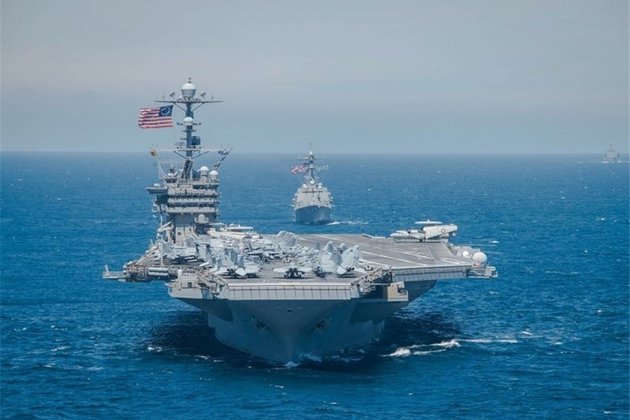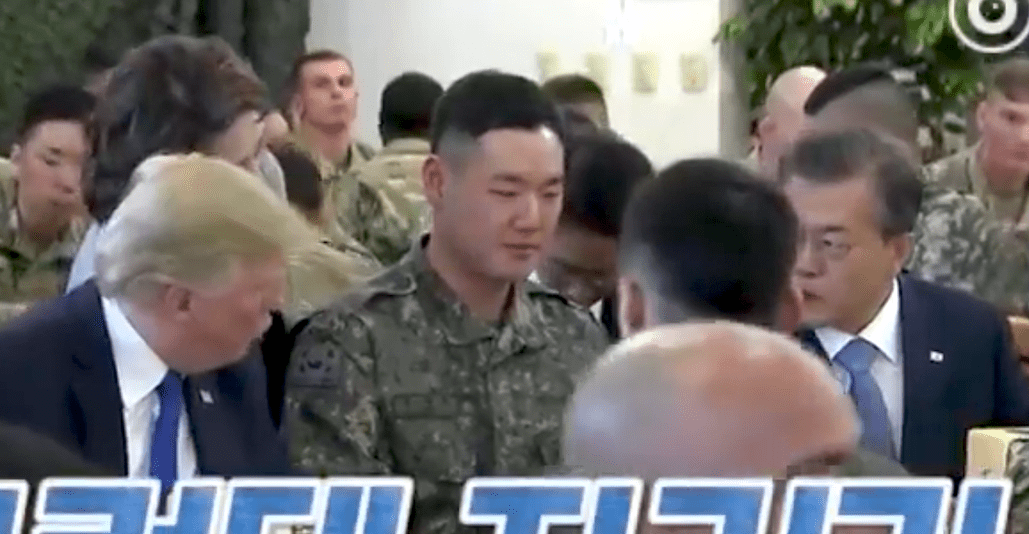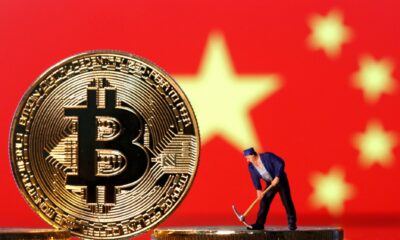Politics
Divergent prospects flow from petroleum riches in Central Asia
Author: Kirill Nourzhanov, ANU
After the USSR collapsed in 1991, the energy potential of Central Asia — especially the hydrocarbon reserves in the Caspian Sea basin — generated much excitement in the West. In 1994 former US Secretary of State James Baker famously proclaimed that ‘Caspian oil may eventually be as important to the industrialised world as Middle East oil is today’.
However, the fanciful predictions of 200 or even 720 billion barrels (bb) of crude oil eventually gave way to more realistic estimates. The 2013 BP Statistical Review of World Energy sets the figure at around 38 bb in proved reserves, which is a far cry from the Persian Gulf’s 798 bb. Kazakhstan has the region’s greatest oil endowment, with reserves of 30 bb.
Central Asia’s share of the world’s reserves of natural gas is somewhat higher at 11 per cent; still, it falls short of the Middle East’s share, 43 per cent. Turkmenistan possesses 17.5 trillion cubic metres (tcm) of this commodity, followed by Kazakhstan and Uzbekistan with 1.3 and 1.1 tcm respectively.
While Kazakhstan and Turkmenistan will not and could not become swing producers on a par with Saudi Arabia and Qatar, with a global outreach and significant influence on international energy security, they are rich countries craving the role of reliable providers of hydrocarbons to the market. Maximising the benefits from resource politics requires creative and balanced engagement by Central Asian leaders with internal and external stakeholders.
The energy sectors in Kazakhstan and Turkmenistan have played a critical role in attaining high rates of economic growth after 2000. Hydrocarbon rents have also enabled the authoritarian regimes in Central Asia to provide the welfare services that ensure their populations’ acquiescence in their government.
In 2013 the oil sector in Kazakhstan generated a quarter of GDP, 65 per cent of the total exports, and 40 per cent of budget revenues. Natural gas constituted 90 per cent of Turkmenistan’s exports, and the petrochemical industry as a whole accounted for half of the country’s GDP. The sustainability of this model of development may be eroded by the common problems of effective investment, resource depletion and social dislocation.
Kazakhstan appears to be better prepared to tackle these challenges. Its long-serving president, Nursultan Nazarbaev, has consistently pursued an open-door policy towards foreign energy companies. Kazakhstan has attracted more foreign investment per capita than any other Commonwealth of Independent States country since 1991, with 89 per cent of the funds going to the oil and gas sector. Western, Russian, Middle Eastern, Chinese and Indian corporations are all present in Kazakhstan; they balance each other out so that no one foreign actor has too much influence over the Kazakh oil sector.
The flow of money did not dry up even after the authorities engaged in resource nationalism and tightened control and regulation of the energy sector in 2007. In 2012, the government launched an unprecedented ‘People’s IPO’ program, selling stakes in energy assets to domestic investors. The expectation is that half a million of Kazakhstan’s 16.7 million citizens will acquire equity in the oil and gas sector over the next five years.
Diversification away from oil and gas dependency is already a high priority for Kazakhstan’s government. In January 2014, Nazarbaev outlined an ambitious program, ‘Kazakhstan-2050’, which set the objective of moving the country into the top-30 most developed nations in the world. The hydrocarbon sector, and particularly the national sovereign wealth fund, are to act as the source of financing to modernise and radically improve the quality of life.
Labour unrest has been gaining momentum in Kazakhstan’s oil and gas industry since the 2000s, fuelled by poor working conditions and inequality in pay between local and expatriate staff. In December 2011, a strike in Zhanaozen culminated in a riot and substantial loss of life. The incident led to two major welfare initiatives in 2012, yet according to many observers at home and abroad, industrial relations in the sector remain ripe for reform.
Unlike Kazakhstan, Turkmenistan has not undergone a fundamental market transition after independence. It has remained a paternalist state that provides the population with basic consumer goods and utilities on a free or highly subsidised basis. The hydrocarbon sector is tightly controlled by the government and remains non-transparent; the investment climate is difficult. The change of guard from the first president, Saparmurat Niyazov, who died in 2006, to Gurbanguly Berdymuhammedov did not bring any liberalisation. The regime continued to pour petrodollars into extravagant high-visibility projects at the expense of improving basic services for the population.
Berdymuhammedov’s strategy of economic development relies on the extensive growth of gas exports. Since 2003, the Chinese government and Chinese companies have emerged as Turkmenistan’s main partners. In the absence of serious competition, they now dominate upstream and downstream activities in the Turkmen gas sector. The most recent example of this domination came in September 2013, when Berdymuhammedov and Chinese president Xi Jinping launched the giant Galkynysh gas field east of Ashgabat. The field was explored using a soft loan from the government of China. China National Petroleum Corporation is the sole service contractor implementing its development, and the field’s output will go to China via a pipeline to be completed in 2016.
The main threat to Berdymuhammedov’s energy policy comes from its overt patrimonialism. Decisions are made and revoked at the head of state’s whim. Even more than his predecessor, he favours members of his Ahal-Tekke tribal group when it comes to providing access to hydrocarbon rents. This leads to infighting among clans in the power elite, frequent purges, and a constant rotation of the executive personnel in the energy sector.
Diversifying export routes and obtaining the best purchase price in the international market have been top priorities in Kazakhstan’s and Turkmenistan’s foreign policies.
Kazakhstan has multiple pipelines delivering its oil to end users in Europe, Russia and China. Italy, The Netherlands, France and Austria bought 56 per cent of Kazakhstani oil in 2012, while China accounted for 16 per cent. The existing transport infrastructure has enough flexibility and spare capacity to accommodate the input from new oil fields and absorb market shocks.
Turkmenistan suffered for many years from dependency on the old Soviet gas distribution network, which put it at the mercy of the Russian gas monopoly Gazprom. After a number of price disputes and an explosion at a Gazprom-controlled pipeline in April 2009 which paralysed Turkmenistan’s gas industry for months, it finally got a break in the form of a pipeline to China, commissioned in December 2009. In 2012, Turkmenistan delivered 43 billion cubic metres (bcm) to the market, 52 per cent of which went to China, while Russia’s import fell by three quarters to 24 per cent, due to Russia’s increased domestic production. Iran soaked up 22 per cent. A raft of energy agreements signed between Berdymuhammedov and Xi in 2013 locked Turkmenistan’s growing production and export capacity into an eastern direction. By 2020, China is projected to import 65 bcm of Turkmen gas each year. This may leave precious little to other potential customers.
It seems that the Russian near-monopoly on Turkmen gas exports is being replaced by a Chinese one. Already in 2010 China was paying 36 per cent less per cubic metre than Russia, and 11 per cent less than Iran. Nabucco and TAPI — two pipeline alternatives mulled over since the 1990s that could have helped Turkmenistan break into the lucrative EU and South Asian markets — have never materialised. The reasons for their failure are complex, but Russian and Chinese intransigence did play a role.
At the current rate of production, Kazakhstan’s oil may run out in 30 years, but the country is reasonably well positioned to benefit in full from its energy wealth and eventually overcome its over-reliance on the oil sector. Turkmenistan may enjoy 70 to 100 years of robust gas exports yet its current trajectory is likely to turn it into a mere resource appendage of China.
Dr Kirill Nourzhanov is Deputy Director at the Centre for Arab and Islamic Studies, The Australian National University.
This article appeared in the most recent edition of the East Asia Forum Quarterly,‘On the edge in Asia’.
See the original post:
Divergent prospects flow from petroleum riches in Central Asia
Politics
US Navy Carrier Conducts Exercises in South China Sea

TEHRAN (Tasnim) – A US Navy aircraft carrier conducted exercises in the contested South China Sea on Friday, the US navy said in a statement. –
A strike group led by the USS Ronald Reagan conducted flight operations and high-end maritime stability operations and exercises, the statement said, Reuters reported.”Integration with our joint partners is essential to ensuring joint force responsiveness and lethality, and maintaining a free and open Indo-Pacific,” US Navy Commander Joshua Fagan, Task Force 70 air operations officer aboard USS Ronald Reagan, was quoted as saying.The drill comes amid heightened tensions between the United States and China.
Washington has criticized Beijing over its novel coronavirus response and accuses it of taking advantage of the pandemic to push territorial claims in the South China Sea and elsewhere.The United States has long opposed China’s expansive territorial claims in the South China Sea and has sent warships regularly through the strategic waterway.China has objected to such exercises and said the US rejection of its claims in the South China Sea has raised tension and undermined stability in the region.China claims nine tenths of the resource-rich South China Sea, through which some $3 trillion of trade passes a year. Brunei, Malaysia, the Philippines, Taiwan and Vietnam have competing claims.
Politics
How China is using tourism for geopolitical goals
The Chinese government has a degree of leverage over its tourists that other governments do not enjoy. Many Chinese tourists are new to international tourism and have limited international language abilities

Decades of astonishing economic growth have given China new tools for extending its influence abroad and achieving its political goals.
(more…)













